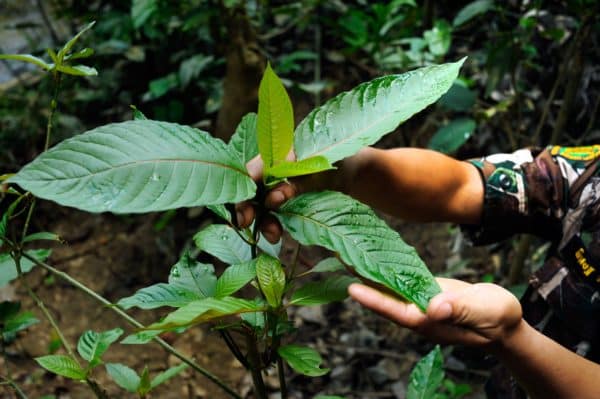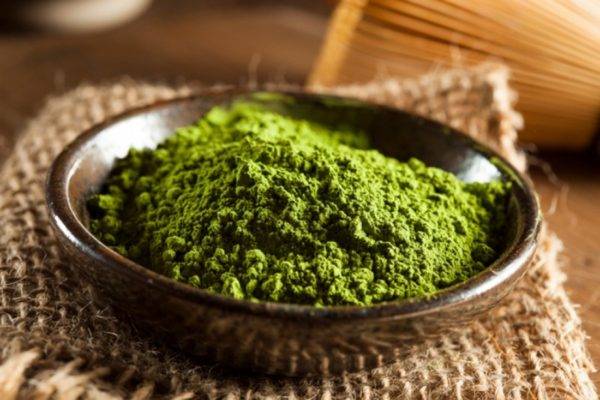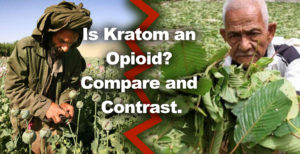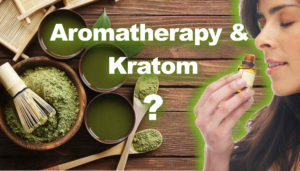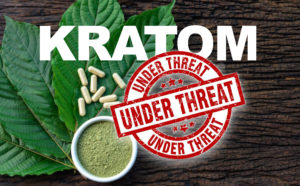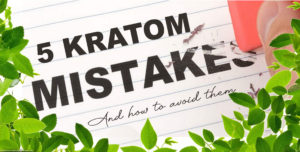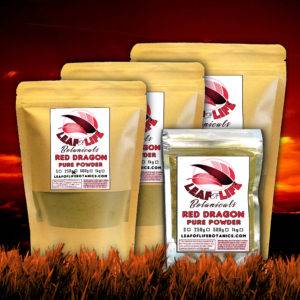Doing an internet search on the word “kratom”, one may find this.
All about kratom, according to the European Monitoring Centre for Drugs and Drug Addiction. This web page is fairly even-handed and not seem to be unduly influenced by Big Pharma, which fears kratom as a competitive natural substance.
https://www.emcdda.europa.eu/publications/drug-profiles/kratom_en
QUOTE
Mitragyna speciosa Korth. (of the Rubiaceae family) is a 4 to 16-metre high tropical tree indigenous to South East Asia, the Philippines, and New Guinea but now cultivated elsewhere. In Thailand, the tree and leaf preparations from it are called kratom.
Traditionally, fresh or dried kratom leaves are chewed or made into tea; they are seldom smoked.
At a low dose, kratom has stimulant effects and is used to combat fatigue during long working hours. At high dosages, however, it can have sedative-narcotic effects.
It is also used in traditional medicine and as an opium substitute. The phytochemicals isolated from various parts of the tree include over 40 structurally related alkaloids as well as several flavonoids, terpenoid saponins, polyphenols, and various glycosides.
The main psychoactive components in the leaves are mitragynine and 7-hydroxymitragynine, both found only in Mitragyna speciosa.
END QUOTE
This is a good start, a scientific explanation of kratom as a plant. Many articles tend to jump right into the reported effects of kratom and how it can be abused, which is the sensationalism that sells ads. So we smile with approval at an online report on kratom that establishes exactly what kratom is and where it grows naturally.
The emphasis, which angers Big Pharma, of course, is on how kratom is natural. It’s a plant that was put on Earth for a reason. It’s not some laboratory experiment that is super expensive in research and development, and thus must be hyped to bribe doctors. No, kratom is a benign organic substance that is far safer and more effective, according to user testimonies, than most Big Pharma products.
What follows is technical data about mitragyna speciosa as a botanical species. It’s nice to see a highly scientific approach here.
QUOTE
Mitragynine is the most abundant alkaloid in the leaves.
It was first isolated in 1921 and its chemical structure was fully elucidated in 1964.
The systematic (Chemical Abstract) name is (αE,2S,3S,12bS)-3-ethyl-1,2,3,4,6,7,12,12b-octahydro-8-methoxy-α-(methoxymethylene)-indolo [2,3-a] quinolizine-2-acetic acid methyl ester – CAS Registry Number: 4098-40-2.
Other names: (E)-16,17-didehydro-9,17-dimethoxy-17, 18 -seco-20α-yohimban-16-carboxylic acid methyl ester, 9-methoxycorynantheidine, and SK&F 12711.
Mitragynine is insoluble in water but soluble in conventional organic solvents, including acetone, acetic acid, alcohols, chloroform, and diethyl ether, providing fluorescent solutions. Mitragynine distils at 230–240 °C at 5 mmHg.
It forms white, amorphous crystals that melt at 102–106 °C. The melting point of mitragynine hydrochloric acid salt is 243°C; the picrate melts at 223–224 °C and the acetate at 142 °C.
The chemical total syntheses reported for several kratom alkaloids are too complex to be used for the economic production of any of these compounds. However, mitragynine can serve as a chemical precursor to the more potent 7-hydroxymitragynine.
END QUOTE
This is very astute chemistry information about kratom, mitragyna speciosa. This article goes deeper, but we’ll skip ahead to other parts of this report.
QUOTE
The leaves of the tree Mitragyna speciosa are oval or ovate-lanceolate and dark green in color and can grow to 180 mm long and 100 mm wide. The veins of the leaves are either greenish-white or red — the former is reputed to be more potent.
The average weight of a fresh and a dried leaf is about 1.7 and 0.43 g respectively. The yellow and globular flowers of the tree bear up to 120 florets. The fruit is a capsule containing numerous small flat seeds.
Kratom products are usually supplied as crushed or powdered dried leaves that are light to dark green in color. Powdery, greenish, or beige-brown kratom preparations fortified with extracts from other leaves are also available.
Stable, paste-like extracts and dark brown kratom resin can be made by partially or fully boiling down the water from aqueous kratom leaf suspensions. Tinctures and capsules, filled with powdered kratom, are also available.
END QUOTE
It’s nice to have such a closely observed description of the kratom plant itself. While this information is valuable and interesting, the meat of the matter is coming now. The subhead here is PHARMACOLOGY, the juicy stuff, and then right on into kratom’s MODE OF USE. We now deep dive into the effects and results of taking servings of kratom as a dietary supplement.
QUOTE
PHARMACOLOGY
Kratom preparations contain several phytochemicals in varying ratios rendering their proper pharmacological evaluation difficult. Human clinical studies are scarce.
In general, the effects of kratom in humans are dose-dependent: small doses produce ‘cocaine-like’ stimulation while larger dosages cause ‘morphine-like’ sedative-narcotic effects.
After taking a few grams of dried leaves, the invigorating effects and euphoria are felt within 10 minutes and last for one to one and a half hours. Kratom users report increased work capacity, alertness, sociability, and sometimes heightened sexual desire. The pupils are usually normal or very slightly contracted; blushing may be noted.
In one of the few human clinical experiments, a 50 mg oral dose of mitragynine produced motor excitement, followed by giddiness, loss of motor coordination (positive Romberg’s test), and tremors of the extremities and face. For regular kratom users, loss of weight, tiredness, constipation, and hyperpigmentation of the cheek may be notable side effects. The pharmacological mechanism responsible for the stimulant activity is unclear.
Kratom taken in large, sedating doses corresponding to 10–25 g of dried leaves may initially produce sweating, dizziness, nausea, and dysphoria but these effects are shortly superseded with calmness, euphoria, and a dreamlike state that lasts for up to six hours. Contracted pupils (miosis) are noted.
The consumption of kratom concomitantly with other drugs can provoke serious side effects. In fact, adverse drug interactions involving kratom tea taken with carisoprodol, modafinil, propylhexedrine or Datura stramonium have been reported. A fatal case in the United States involved a blend of kratom, fentanyl, diphenhydramine, caffeine and morphine sold as a herbal drug.
MODE OF USE
Traditionally, the fresh or dried leaves of kratom are chewed or brewed into tea. When making tea, lemon juice is often added to facilitate the extraction of plant alkaloids; before drinking, sugar or honey may be added to mask the bitter taste of the brew….
To experience vigor and euphoria, traditional ‘kratom eaters chew one to three fresh leaves at a time. The veins are usually removed from the leaves before eating and sometimes salt is added ‘to prevent constipation’. Only the masticated material is swallowed. Consumption is followed by drinking warm water or coffee, tea or palm sugar syrup. Regular and addicted users chew 3 to 10 times a day. When kratom is not available, the leaves of Mitragyna javanica (other nameMitragyna parvifolia) are used as substitutes.
In southern Thailand, in recent years homemade ice-cold cocktails, called ‘4×100’, have become popular for their alleged alcohol-mimicking effect among young Muslim people. The cocktails are made from kratom leaves, a caffeine-containing soft drink, and codeine- or diphenhydramine-containing cough syrup as the three basic ingredients to which ice cubes, an anxiolytic, an antidepressant or an analgesic drug is added.
END QUOTE
Now let’s jump ahead to the article’s conclusion, sub-headed MEDICAL USE. It’s wonderful that it ends on a rather positive note, encouraging more clinical trials and investigative research into kratom’s alkaloids and applications for therapeutic use in modern medicine and DIY home remedies.
QUOTE
MEDICAL USE
Six Asian and four African Mitragyna species are known to be used in traditional medicine but the stimulant/sedative-narcotic/psychoactive effects are characteristic only for Mitragyna speciosa.
In South East Asia, kratom is used as an antidiarrheal, a cough suppressant, an antidiabetic, an intestinal deworming agent and wound poultice as well as to wean addicts off heroin. Outside Asia, anecdotal use of kratom preparations for the self-treatment of chronic pain and opioid withdrawal symptoms and as a replacement for opioid analgesics has been reported.
There is, however, no approved use of kratom or its alkaloids in modern medicine. It has been suggested that the therapeutic potential of kratom or its purified ingredients for the treatment of pain, depression, and drug withdrawal symptoms should be explored.
END QUOTE


